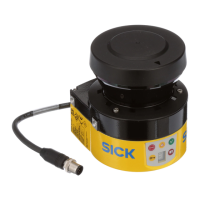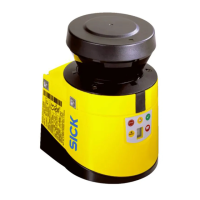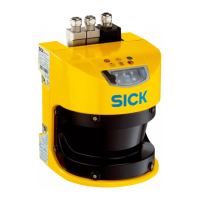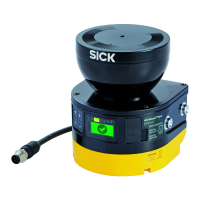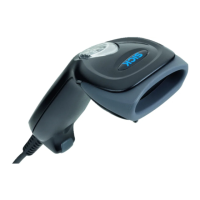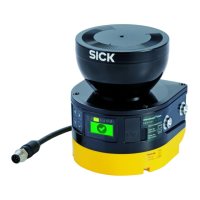Operating instructions Chapter 5
S300
8010948/YY96/2016-02-17 © SICK AG • Industrial Safety Systems • Germany • All rights reserved 71
Subject to change without notice
Mounting
5.6 Time for monitoring case switching
I
f you switch between several monitoring cases, along with the minimum distance to the
dangerous state there is a further safety relevant aspect that you must address.
Set the timing for the switching such that the S300 already detects a person in the
protective field with an adequate minimum distance before the dangerous state
occurs!
Note that at the time of the switching there may be a person in the protective field. Only by
means of switching in the correct time frame (i.e. before the hazard occurs at this point for
the person) is protection provided.
If you switch the controller within 10 ms, the protective field selected is available within
the basic response time of the S300. For this reason you can initiate the switching at the
time at which you actually want to switch from one monitoring case to the other.
However, you must advance the timing of the switching if you …
have entered an input delay for your switching method (see section “Input delay” on
page 38).
use external inputs (e.g. the inputs on another S300).
control external OSSDs instead of the internal OSSDs (e.g. the OSSDs on another S300)
via EFI.
The following diagram shows the relationships:
If the input conditions are present at the control inputs within 10 ms (cf. ), the timing
for the switching (t
UF
) does not need to be advanced.
If an input delay for the control inputs needs to be taken into account (cf. ), the timing
for the switching (t
UFVz2
) must be advanced by the input delay.
If the inputs on a different device are used via EFI, the timing for the switching (t
UFVz3
)
must be further advanced by 0.5 times the basic response time of the slowest system in
the EFI system (cf. ).
If external OSSDs are used, the timing for the switching (t
UFVz4
) must be further advanced
by 20 ms (cf. ).
In the phases before and after the switching, the minimum distances calculated for the
individual monitoring cases apply on their own.
The considerations above serve only for the selection of the optimal timing of the
switching.
W
ARNING
switch timing
Notes
t
UF
t
UFVz2
t
UFVz3
t
UFVz4
t
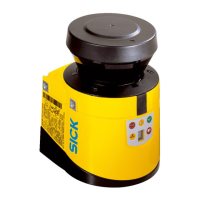
